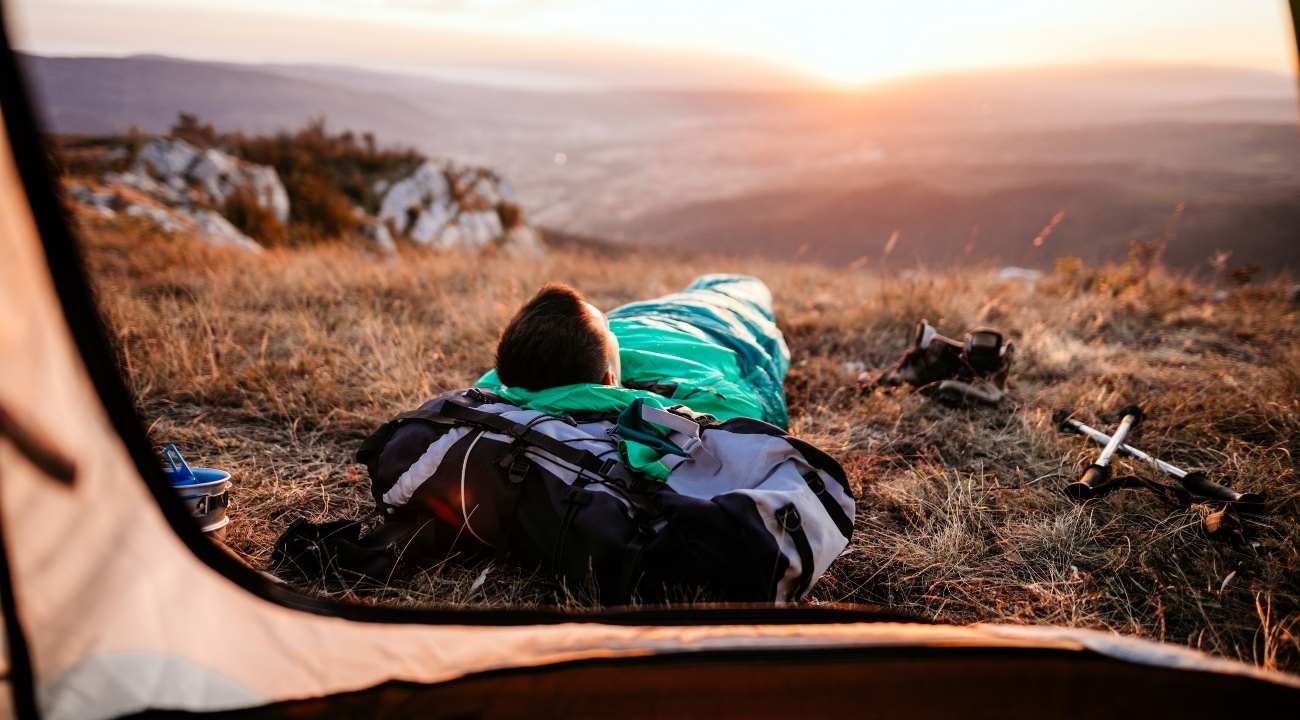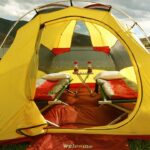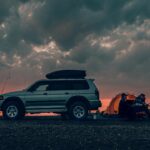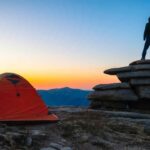How well you sleep at night regulates how exciting your next day’s adventure will be. Yeah, a blissful night’s slumber is every outdoor enthusiast’s demand. And nothing can be great than a high-quality sleeping bag to fulfill this requirement. It provides warmth, insulation, and comfort to enjoy a restful sleep. But all sleeping bags don’t suit all outdoor activities, and they come in various sizes with different features. As a result, beginners find it challenging to find a perfect one that satisfies their needs. To help you out, in this article we will walk you through some of the steps on how to choose a sleeping bag for the best outcome.
Before finalizing one sleeping bag, you need to mull over a couple of factors, and we will gradually cover all those facts to help you choose the best sleeping bag for your specific needs.
Shell
Usually, most sleeping bags tend to be manufactured from either polyester or nylon. Both materials share the same properties; as such, they are lightweight, durable, and resistant to wrinkling, abrasion, stretching, and shrinking. But the downside of these materials is they are naturally hydrophobic and absorb water. So, to solve this issue, manufacturers use a durable water-repellent finish to keep moisture at bay. Anyway, while choosing a sleeping bag, make sure it boasts all the attributes mentioned above. Now, the 2nd most essential factor is the insulation type of a sleeping bag.
Insulation Type
Speaking of the insulation of sleeping bags, you will find two insulation types; one is down, and the other is synthetic. Down’s warmth-to-weight ratio is better than synthetic insulation. It is highly compressible and remains lofty even after packing inside a stuff sack thousands of times. But if somehow it comes in contact with water, it can’t provide such warmth. And in this case, synthetic beats down as it won’t lose its ability to keep you warm even after soaking a bit of water. So, both insulation types are suitable, and you can choose any of them that fits your requirements.
Temperature Rating
The temperature rating of a sleeping bag refers to the usability of this equipment in different seasons. For instance, a 30-degree sleeping bag will keep you comfortable around 30 degrees, and below that, you will start to feel cold. Sleeping bags with such a comfort rating are ideal to use in the summer season a sleeping pad for hammocks can enhance your camping experience. In contrast, a sleeping bag with a 10-degree comfort rating is appropriate for winter use. There are some other considerations for choosing a sleeping bag, and these include;
Shape
In general, sleeping bags come in four different shapes: rectangular, semi-rectangular, mummy, and double bag.
- Rectangular Bag: Rectangular bags offer ample room for your legs and arms to stretch out, and some of them are entirely unzippable.
- Semi-Rectangular Bag: Speaking of semi-rectangular bags, they are, in essence, a modified version of mummy bags, and they are suitable for people who seek to save some weight without losing their comfort.
- Mummy Bag: If you want to go with lighter sleeping bags, mummy bags are a viable option. But the problem with these sleeping bags is that they tend to be too tight.
- Double Bag: Lastly, double bags are spacious, robust, durable, and more comfortable. They are designed for two people, though.
Sleeping Bags Activity
So, that’s a basic overview of what you must know before opting for a sleeping bag. Now we will talk about how to select a sleeping bag by activity.
- Camping Sleeping Bag: If you plan to camp in the woods with friends and family, you will need sleeping bags, which are robust, thick, heavy, durable, and ensure optimal comfort.
- Backpacking Sleeping Bag: Unlike the camping ones, this sleeping bag type tends to be light and less bulky. But it doesn’t compromise the warmth and comfort level.
- Mountaineering Sleeping Bag: These sleeping bags are specially manufactured to provide excellent insulation, warmth, and comfort. They show a promising result when it comes to dealing with increased moisture levels. However, these sleeping bag types tend to be expensive, though.
So, now you have a brief idea about sleeping bags, we hope you can make a hassle-free purchase by utilizing the information.

William Arrovo seeks thrills and laughter in everything he comes across. He is a fun loving person with a zest of exploring the breathtaking places around the globe. He feels content in sharing his experiences of travelling to various countries. He is grateful about enriching himself with a myriad of cultures and rejuvenating his soul while staying outdoors.









Leave a Comment